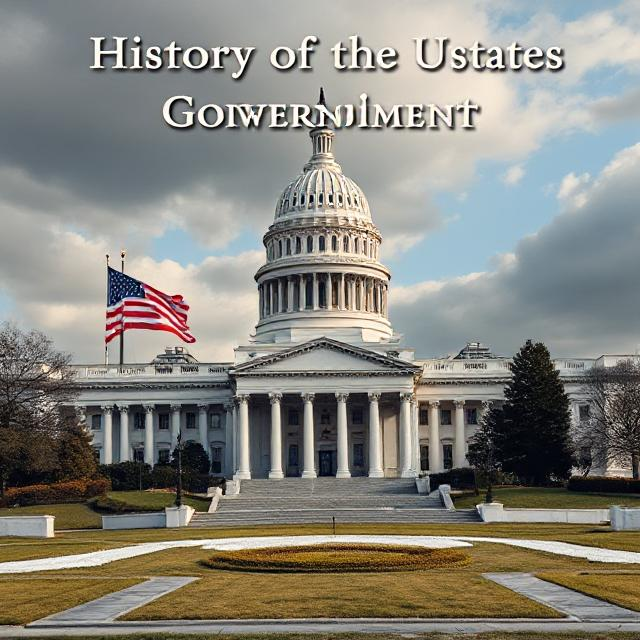The history of the United States government is a fascinating journey that reflects the evolution of democratic principles, the rule of law, and the struggle for civil rights. From its colonial origins to the establishment of a constitutional republic and the ongoing debates about governance, the U.S. government has undergone significant transformations. This article explores key developments in the history of the U.S. government, highlighting foundational documents, major events, and the evolution of political institutions.
Colonial Beginnings

Early Governance
Before the establishment of the United States, the American colonies were governed under various forms of rule, primarily by European powers. The British colonies, in particular, exhibited a mix of self-governance and colonial rule.
Colonial Assemblies
Self-Governance: Many colonies developed their own legislative assemblies, such as the Virginia House of Burgesses established in 1619. These assemblies allowed colonists to have a voice in local governance, setting a precedent for representative government.
Charters and Rights: Colonies operated under charters granted by the British Crown, which outlined their rights and responsibilities. The Magna Carta (1215) and English Bill of Rights (1689) influenced colonial views on governance and individual rights.
Tensions with Britain
As the colonies grew, tensions between colonial governments and British authorities escalated. Issues such as taxation without representation and restrictions on trade led to growing discontent.
Key Events
Stamp Act (1765): This act imposed direct taxes on the colonies, leading to widespread protests and the formation of the Sons of Liberty. The slogan “No taxation without representation” became a rallying cry.
Boston Tea Party (1773): In response to the Tea Act, colonists protested by dumping tea into Boston Harbor, demonstrating their opposition to British taxation policies. This act of defiance galvanized colonial resistance against British rule.
First Continental Congress (1774): Delegates from twelve colonies convened to address grievances against Britain, marking a significant step toward collective action and unity among the colonies.
The American Revolution
Declaration of Independence
In 1776, the colonies declared their independence from Britain, marking a pivotal moment in American history. The Declaration of Independence, primarily authored by Thomas Jefferson, articulated the colonies’ grievances and the philosophical foundations of a new government.
Key Principles
Natural Rights: The Declaration emphasized the importance of individual rights, including life, liberty, and the pursuit of happiness. It argued that governments derive their power from the consent of the governed.
Right to Revolution: The document asserted the right of the people to overthrow a government that fails to protect their rights, laying the groundwork for future democratic movements.
Formation of a New Government
Following the Revolution, the newly independent states faced the challenge of creating a unified government. The Articles of Confederation, ratified in 1781, served as the first governing document.
Articles of Confederation
Weaknesses: The Articles established a weak central government with limited powers, leading to issues such as economic instability and difficulty in raising an army. The lack of a strong federal authority hindered effective governance.
Shays’ Rebellion (1786-1787): This armed uprising by farmers in Massachusetts highlighted the weaknesses of the Articles and the need for a stronger federal government. The rebellion underscored the challenges of economic distress and governmental authority.
Constitutional Convention
The Need for Change
In response to the inadequacies of the Articles of Confederation, delegates from the states convened in Philadelphia in 1787 to draft a new constitution. This gathering became known as the Constitutional Convention.
Key Debates
Federalism vs. Anti-Federalism: Delegates debated the balance of power between the federal government and the states. Federalists, like Alexander Hamilton and James Madison, advocated for a strong central government, while Anti-Federalists feared the potential for tyranny.
The Great Compromise: To resolve conflicts over representation, the Convention established a bicameral legislature, with the House of Representatives based on population and the Senate providing equal representation for each state.
Ratification of the Constitution
The proposed Constitution faced scrutiny and debate among the states. The Federalist Papers, written by Hamilton, Madison, and John Jay, defended the new framework and addressed concerns about central authority.
Bill of Rights
Adoption: To ensure the protection of individual liberties, the first ten amendments, known as the Bill of Rights, were added to the Constitution in 1791. These amendments guaranteed essential rights such as freedom of speech, religion, and the right to a fair trial.
Significance: The Bill of Rights addressed Anti-Federalist concerns and solidified the Constitution’s legitimacy, ensuring that individual liberties would be safeguarded against government infringement.
Development of the Federal Government
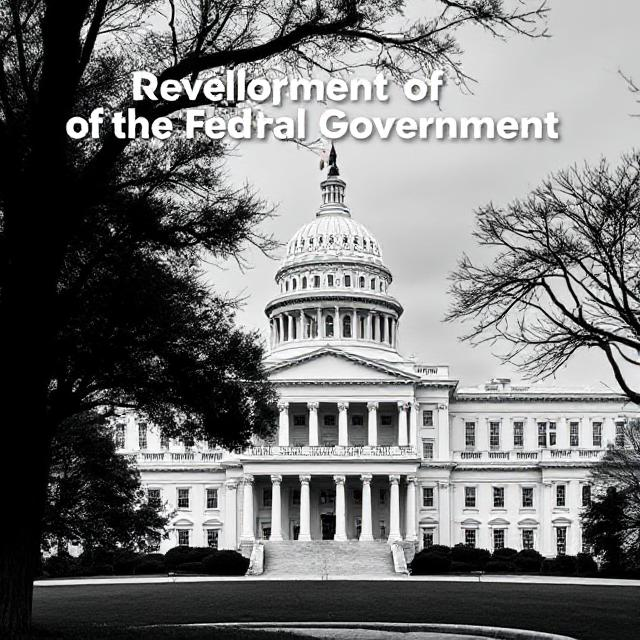
Early Years of the Republic
The new government faced immediate challenges, including establishing a functioning federal system and addressing economic issues. George Washington became the first President, setting important precedents for the office.
Establishing Departments
Cabinet Formation: Washington established a cabinet to advise him, including key figures such as Thomas Jefferson (Secretary of State) and Alexander Hamilton (Secretary of the Treasury). This set a precedent for future administrations.
Hamilton’s Financial Plan: Hamilton’s economic policies aimed to stabilize the nation’s finances through the establishment of a national bank, assumption of state debts, and tariffs on imports. These measures sparked debates over the role of the federal government in the economy.
Political Parties Emerge
The early years of the republic saw the emergence of political parties, reflecting differing views on government power and policy.
Federalists vs Democratic Republicans
Federalists: Led by Hamilton, Federalists advocated for a strong central government, a robust economy, and close ties with Britain. They believed that a strong federal government was essential for national unity and economic growth.
Democratic-Republicans: Founded by Jefferson and Madison, this party favored states’ rights, agrarian interests, and a limited federal government. They were wary of centralized power and sought to protect individual liberties.
Expansion and Conflict (19th Century)
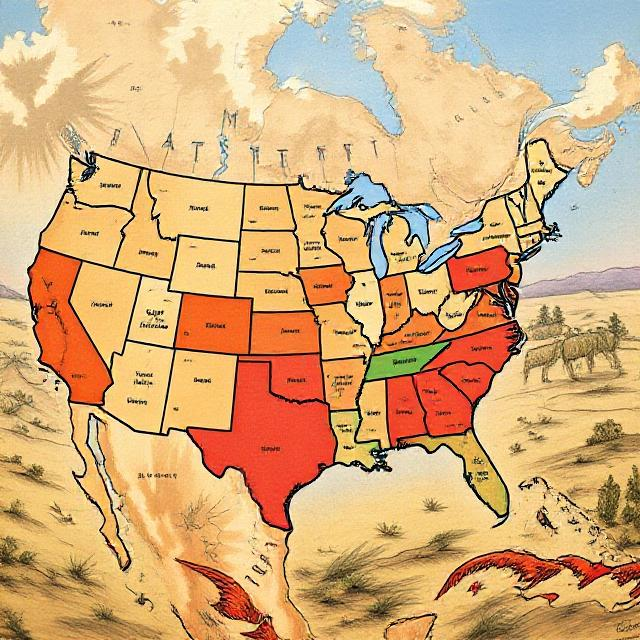
Westward Expansion
The 19th century was marked by westward expansion, driven by the belief in Manifest Destiny the idea that Americans were destined to expand across the continent.
Louisiana Purchase (1803)
Acquisition: The United States acquired the vast territory of Louisiana from France, doubling the size of the nation and opening new lands for settlement. This purchase raised questions about the extension of slavery into new territories.
Lewis and Clark Expedition: Commissioned by President Jefferson, this expedition explored the newly acquired lands, providing valuable information about the geography, resources, and Indigenous peoples of the West.
Slavery and Sectional Tensions
As the nation expanded, the issue of slavery became increasingly contentious, leading to deep divisions between the North and South.
Missouri Compromise (1820)
Compromise: To maintain the balance between free and slave states, the Missouri Compromise admitted Missouri as a slave state and Maine as a free state while prohibiting slavery north of the 36°30′ parallel.
Temporary Solution: While this compromise temporarily eased tensions, it highlighted the growing sectional divide and foreshadowed future conflicts over slavery.
The Civil War
The culmination of tensions over slavery and states’ rights led to the Civil War (1861-1865), a defining moment in American history.
Secession and Conflict
Southern Secession: Following the election of Abraham Lincoln in 1860, several Southern states seceded from the Union, forming the Confederate States of America. The war began with the attack on Fort Sumter in April 1861.
Key Battles: Major battles, such as Gettysburg and Antietam, marked the conflict, resulting in significant loss of life and widespread destruction.
Emancipation Proclamation
Lincoln’s Declaration: In 1863, President Lincoln issued the Emancipation Proclamation, declaring enslaved people in Confederate-held territory free. This shifted the focus of the war to include the fight for freedom.
Impact: The proclamation paved the way for the eventual abolition of slavery and transformed the nature of the conflict.
Reconstruction Era
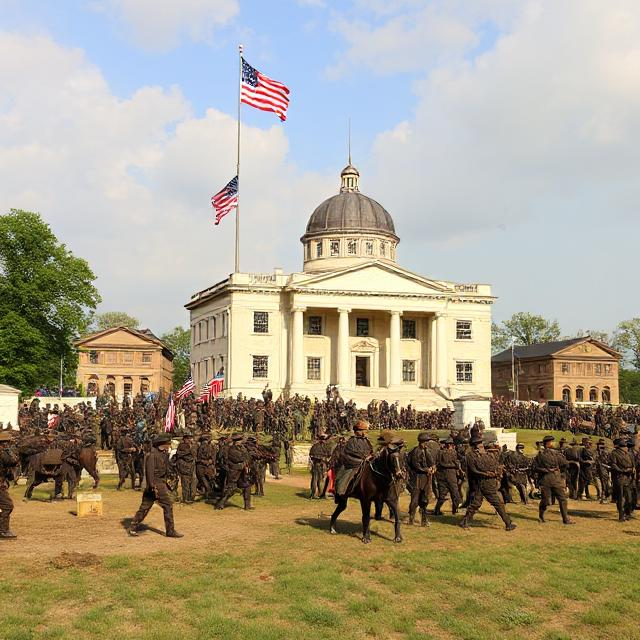
Rebuilding the Nation
After the Civil War, the Reconstruction Era (1865-1877) aimed to rebuild the South and integrate formerly enslaved people into society.
Reconstruction Amendments
13th Amendment: Ratified in 1865, this amendment abolished slavery in the United States, marking a significant turning point in American history.
14th Amendment: Ratified in 1868, it granted citizenship to all persons born or naturalized in the U.S. and ensured equal protection under the law.
15th Amendment: Ratified in 1870, it prohibited the denial of voting rights based on race, ensuring that African American men could participate in the political process.
Resistance and Backlash
Despite progress, many white Southerners resisted Reconstruction efforts, leading to the rise of groups like the Ku Klux Klan, which sought to undermine the rights of African Americans.
Jim Crow Laws
Legal Segregation: In the late 19th century, Jim Crow laws enforced racial segregation and disenfranchised Black voters, effectively reversing many gains made during Reconstruction.
Supreme Court Decisions: Cases like Plessy v. Ferguson (1896) upheld segregation, establishing the “separate but equal” doctrine that legitimized racial discrimination.
The Progressive Era and Expansion of Government
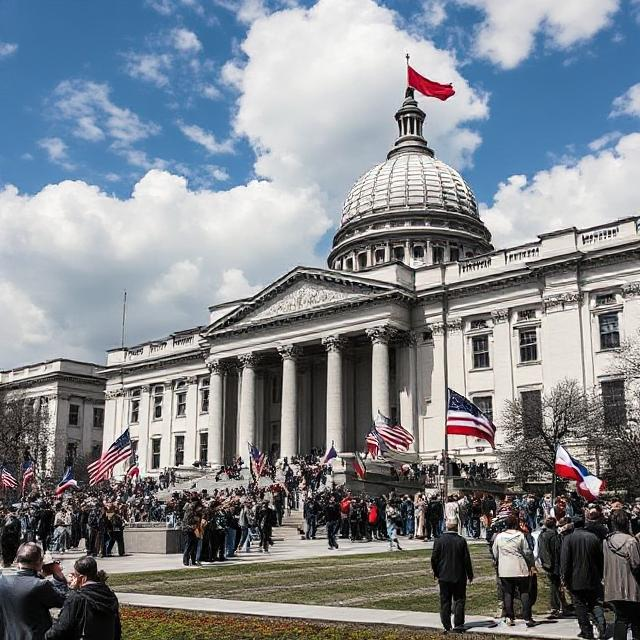
Social and Political Reform
The late 19th and early 20th centuries saw the rise of the Progressive Movement, which aimed to address social, political, and economic issues.
Key Reforms
Women’s Suffrage: The fight for women’s voting rights gained momentum, culminating in the ratification of the 19th Amendment in 1920, granting women the right to vote.
Labor Rights: Progressives advocated for labor reforms, including better working conditions, child labor laws, and the establishment of the eight-hour workday. Labor unions gained strength, pushing for workers’ rights and protections.
Expansion of Federal Power
The Progressive Era also led to an expansion of federal government powers in response to economic challenges and social issues.
New Deal Programs
Franklin D. Roosevelt: In response to the Great Depression, President Roosevelt implemented the New Deal, a series of programs aimed at economic recovery and social welfare. These initiatives expanded the role of the federal government in regulating the economy and providing social services.
Social Security Act: Enacted in 1935, this landmark legislation established a social safety net for the elderly and unemployed, marking a significant shift in government responsibility for citizens’ welfare.
Modern Era and Civil Rights Movement
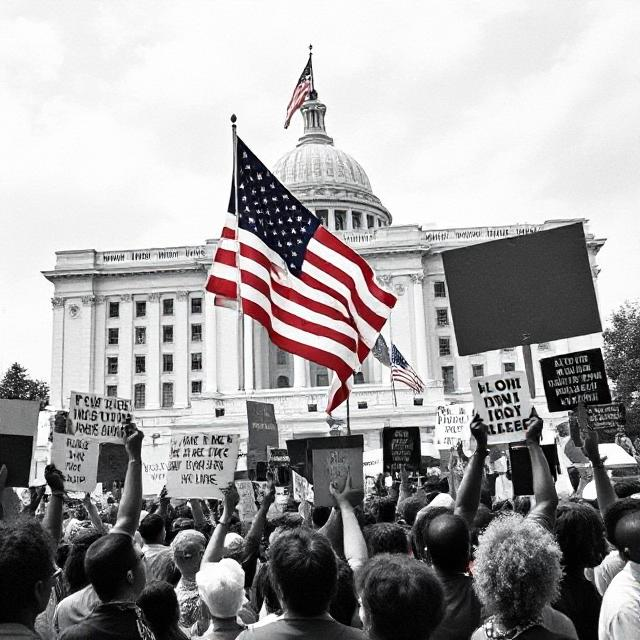
Civil Rights Movement
The mid-20th century was marked by the Civil Rights Movement, which sought to end racial segregation and discrimination against African Americans.
Key Figures and Events
Martin Luther King Jr.: A prominent leader of the Civil Rights Movement, King advocated for nonviolent resistance and civil disobedience. His leadership during events like the Montgomery Bus Boycott and the March on Washington galvanized support for the movement. King’s “I Have a Dream” speech remains a defining moment in American history.
Landmark Legislation: The Civil Rights Act of 1964 and the Voting Rights Act of 1965 were pivotal in dismantling legal segregation and ensuring voting rights for African Americans. These laws represented significant victories for the Civil Rights Movement and were the result of years of activism and struggle.
Social Change and Political Activism
The Civil Rights Movement inspired other social movements, including those advocating for women’s rights, LGBTQ+ rights, and environmental protection.
Women’s Rights Movement
Feminist Activism: The women’s rights movement gained momentum in the 1960s and 1970s, advocating for gender equality and reproductive rights. Key figures like Betty Friedan and Gloria Steinem emerged as leaders in this movement.
Legislative Achievements: The passage of Title IX in 1972 prohibited sex-based discrimination in education, significantly impacting women’s access to education and sports.
Political Landscape
The late 20th century saw shifts in the political landscape, with the rise of conservatism and the emergence of new political movements.
Reagan Era
Ronald Reagan: Elected in 1980, Reagan’s presidency marked a shift toward conservative policies, emphasizing limited government, tax cuts, and a strong national defense. His administration sought to reduce the size of the federal government and promote free-market principles.
Cultural Conservatism: The rise of the religious right and cultural conservatism influenced American politics, shaping debates on issues such as abortion, education, and social values.
21st Century Challenges and Developments

Terrorism and National Security
The September 11 attacks in 2001 marked a turning point in American history, leading to significant changes in national security and foreign policy.
War on Terror
Military Interventions: In response to the attacks, the U.S. launched military operations in Afghanistan and Iraq, leading to prolonged conflicts and debates over U.S. involvement in foreign wars.
Patriot Act: The USA PATRIOT Act, enacted in 2001, expanded government surveillance powers in the name of national security, raising concerns about civil liberties and privacy rights.
Social Movements and Political Polarization
The 21st century has seen a resurgence of social movements addressing issues such as racial justice, climate change, and income inequality.
Black Lives Matter
Movement for Racial Justice: The Black Lives Matter movement, founded in 2013, gained national prominence in response to police violence against Black individuals. Protests and activism called for systemic change and accountability in law enforcement.
Impact on Policy: The movement has influenced discussions on criminal justice reform, police practices, and racial equity, prompting calls for legislative changes at local, state, and federal levels.
Political Polarization
The political landscape has become increasingly polarized, with deep divisions between Democrats and Republicans on key issues such as healthcare, immigration, and climate policy.
Partisan Gridlock
Obstruction and Compromise: The rise of partisan gridlock has led to challenges in passing legislation and addressing pressing national issues. The inability to reach bipartisan agreements has raised concerns about the effectiveness of governance.
Impact on Democracy: Increasing polarization has sparked debates about the health of American democracy, with discussions on voter access, gerrymandering, and the influence of money in politics.
Conclusion
The history of the United States government is a rich and complex tapestry woven from colonial beginnings, revolutionary ideals, and ongoing struggles for equality and justice. Understanding this history is essential for appreciating the principles of democracy, the rule of law, and the importance of civic engagement. As the nation continues to evolve, the lessons of the past will inform the challenges and opportunities that lie ahead.


